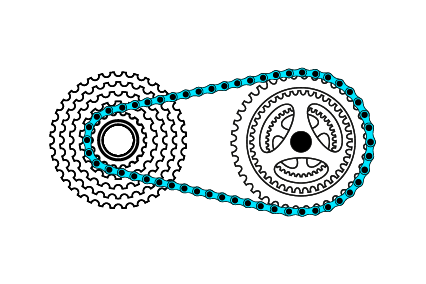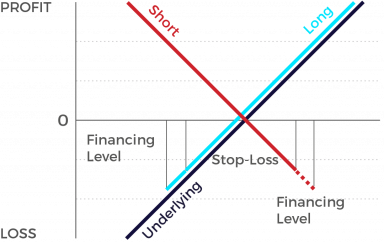Leverage products
Mini Future

Leveraged products are financial instruments that enable traders to gain greater exposure to the market without increasing their capital investment. They do so by using leverage.
Any financial instrument that allows you to take a position that is worth more on the market than your initial outlay is a leveraged product. Different leveraged products work in different ways, but all amplify the potential profit and loss for a trader.
Leveraged products will almost always require you to pay an initial portion of the position you intend to open. This is called the margin.
Market expectation
- Mini-Future (Long): Rising underlying
- Mini-Future (Short): Falling underlying
Characteristics
- Small investment generating a leveraged performance relative to the underlying
- Increased risk of total loss (limited to initial investment)
- Suitable for speculation or hedging
- Continuous monitoring required
- A residual value is redeemed following a stop-loss event
- No influence of volatility
Graphic

With already more than 600 listed products available, mini-futures are becoming increasingly popular in Switzerland. If you compare them to warrants, you’ll see that mini-futures have basically the same characteristics as knock-out products: they’re open-ended and thus have no predefined term to expiration. If their knock-out threshold is touched or penetrated, they expire immediately and the issuer flattens the position. In such an event, investors receive payment of the residual value.
Leverage
The closer the current market price of the underlying instrument is to the knock-out level, the more speculative the mini-future is because it demonstrates tremendous leverage. The leverage can be calculated as follows:
(price of underlying instrument x exercise ratio) / price of mini-future
= (CHF 15.00 x 1) / CHF 2.00
= 7.5
Product types
As is the case with normal warrants, you can establish long (call) or short (put) positions in mini-futures. And of course when you’re long you profit from rising prices, and the opposite holds true with a short position. Because mini-futures have no specified expiration date, they always have to be outfitted with a knock-out threshold…after all, the only things that never stop are you tax bills. Once the threshold is touched or penetrated, the product is knocked-out and the position flattened.